Still gaga for the look of a white marble countertop, consumers are choosing it in materials that offer more rugged performance, less upkeep, and slimmer profiles.
Quartz continues to lead with 25 percent market share, says Massimo Ballucchi, executive director of marketing for Cosentino America. In a recent study by Research Institute for Cooking and Kitchen Intelligence (RICKI), 78 percent of designers predict the material would continue to trend; quartzite was second with 47 percent.
The advantages of quartz are well publicized. Non-porous, it resists stains and scratches, does not require regular sealing, and is easy to maintain. It also offers better visual consistency than natural marble, so “you can pick it off a photo or a small sample,” says designer Patricia Gaylor, of Eco Interiors by Patricia Gaylor.
[ Read More: 7 Things You Should Know Before Choosing Concrete Countertops ]

Solaris is a new outdoor quartz collection designed to withstand temperatures from -13 degrees to 122 degrees Fahrenheit. It features resin technology that prevents discoloration from long-term exposure to UV light. The 2-cm-thick slabs measure 56½ by 120 inches and come in Palm Shade white, Clear Skies gray, and Midday.
The quartz industry is in flux, thanks to a 400 percent anti-dumping tariff on Chinese quartz. Until recently, 65 percent of the quartz sold in the U.S. was made in China and quality has been uneven. Smaller Asian countries are ramping up production to fill the void, but they lack the experience necessary to make a slab that performs as expected, says Evan Cohen, president and CEO of Quality Marble & Granite.
Cohen says cheaper fillers and resins can impact durability or cause yellowing in a white countertop after long-term exposure to UV light. Educating clients is crucial to prevent disappointment. Provenance may not be top of mind, but “If I were a consumer, I’d want to know,” he says.
Not to be confused with quartz, quartzite is a natural stone with a passing resemblance to veined white marble and has emerged as another popular choice. A 7 on the Mohs scale, it’s harder than marble, more difficult to cut, and “different for some fabricators to work with,” says Cohen. According to the Natural Stone Institute, real quartzite does not etch, so if you find a slab that does, chances are it’s mislabeled.
[ Read More: Lapitec Claims the World's First Sintered Stone Slabs With Through-Body Veining ]

Taking a more sustainable approach to quartz, concrete-inspired Buxton is made from unused slabs, while Brittanica Block consists of strips of Brittanicca slabs that would otherwise have been discarded.
Quartzite may come with naturally occurring fissures, which may not be for everyone and, despite its hardness, can crack or chip, says Cohen. Cracking may be more likely with heavier veining.
A lingering misconception about natural stone countertops is the frequency with which they need to be resealed. While old sealants typically coat the surface of the countertop and degrade more quickly, some installers are using impregnators that harden inside the stone, protecting it for as long as 15 to 20 years. Because not all installers use them, it’s good to ask, says Cohen.
The movement toward more contemporary kitchen design has spawned new countertop options that allow for profiles sleeker than the traditional 1½ inches.
[ Read More: Wood Countertops Are Great But Require Special Maintenance ]

These 12-mm-thick porcelain countertops measure 1620 mm by 3240 mm and weigh 30 kilograms per square meter. Non-porous and suitable for indoor and outdoor use, they are resistant to stains, scratches, chemicals, thermal shock, UV light and heat and high temperatures.
Both Cohen and Gaylor see great promise in porcelain, which comes in 12-mm-thin sheets. Non-porous, porcelain will not stain, etch, or scratch and does not require sealing. UV-stable, it can be used outside, and because of its extreme heat resistance, burners can be mounted directly on the surface.
Noah Chitty, director of technical services for Crossville, cautions that not all porcelain is created equal. Differences in the quality of raw materials and the manufacturing process can affect product stability and tension and could lead to breakage. Some manufacturers recommend installation with a supporting substrate. Corners should have a small radius cut to prevent cracking, Cohen adds.
Porcelain’s price is lower than that of quartz, but after fabrication and installation, the two are roughly comparable, says Gaylor. Because the patterns printed on porcelain are only surface-deep, cutouts can disrupt visual continuity, and under-mounting a sink may require adding a border. Creating the look of a thicker edge also involves additional labor.
[ Read More: 6 Alternative Countertop Options You May Not Know ]
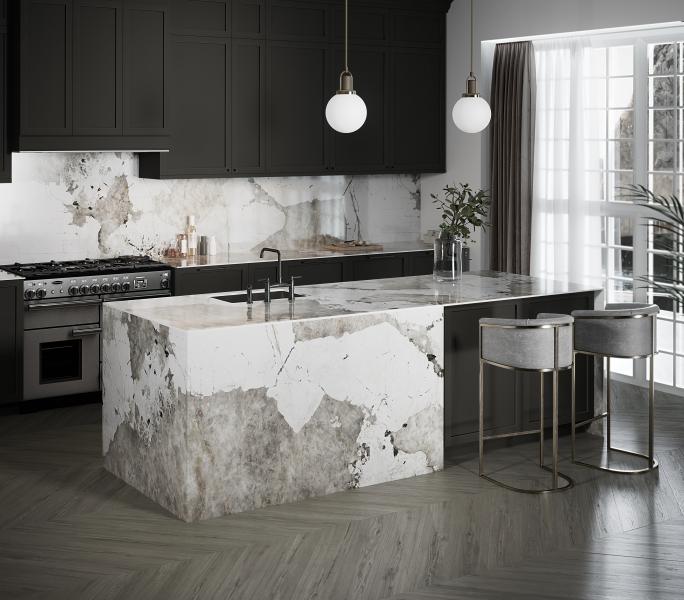
The new Avant-Garde series of compact sintered stone offers three colorways: Laurent, which is dark brown with gold veining; Khalo (shown), a spotted design in white, brown, black, and gold; and Helena, a white-and-gray onyx look. It’s available in polished, textured, and matte finishes.
At present, porcelain’s main drawback is the scarcity of experienced fabricators and installers, but that may change as demand grows.
In the meantime, Wilsonart is addressing the issue of labor shortage with THINSCAPE, an engineered composite made of paper and resin. Measuring a ½-inch thick and available in 12 printed designs, the material is stain-, scratch-, and heat-resistant. It comes in four sheet sizes. At 3.77 pounds per square foot, THINSCAPE transports easily without risk of breakage, says Ricky Crow, vice president of product management. It’s priced between laminate and solid surfacing. THINSCAPE can be cut with a CNC router and is strong enough to be installed without a supporting substrate. “Its sweet spot is that it almost comes off a CNC ready to be put in,” says Crow. “It’s a product that’s built for automation.”
A handful of years on the market, compact sintered stone continues to grow its fan base. Four percent of designers in the RICKI study mentioned it—along with porcelain—as trending upward, and Gaylor likes its versatility. “You can wrap it to do countertops and sinks,” she says.
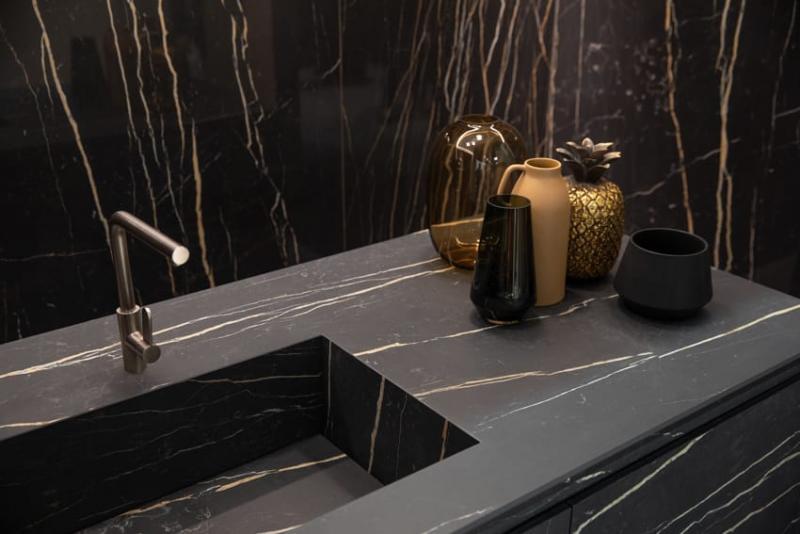
Florim Stone is a porcelain panel measuring 63 inches by 126 inches and is offered in three thicknesses that allow a countertop design to continue onto a backsplash; 12 mm and 20 mm are appropriate for countertop applications. It’s suitable for indoor and outdoor use.
Available in 2 cm and 3 cm profiles, the material shares many of the same selling points as porcelain. Sealing is not necessary and upkeep is minimal. Sintered stone is also self-supporting, and unlike porcelain, colors and patterns penetrate all the way through the slab.
Of course, stone looks are also available in laminates, an affordable option with a long history. Gaylor likes it for auxiliary spaces, such as laundry rooms and playrooms, and because it comes in an array of designs, “you can always find something that’s really good-looking,” she says.
Moving forward, both Crow and Cohen predict wider adoption of thin countertops with sleekly simple edges as kitchens take on a cleaner, more European aesthetic. Expect to see more sustainable materials, as well as more surfaces that work indoor and out. Given what’s available now, the wait won’t be long.
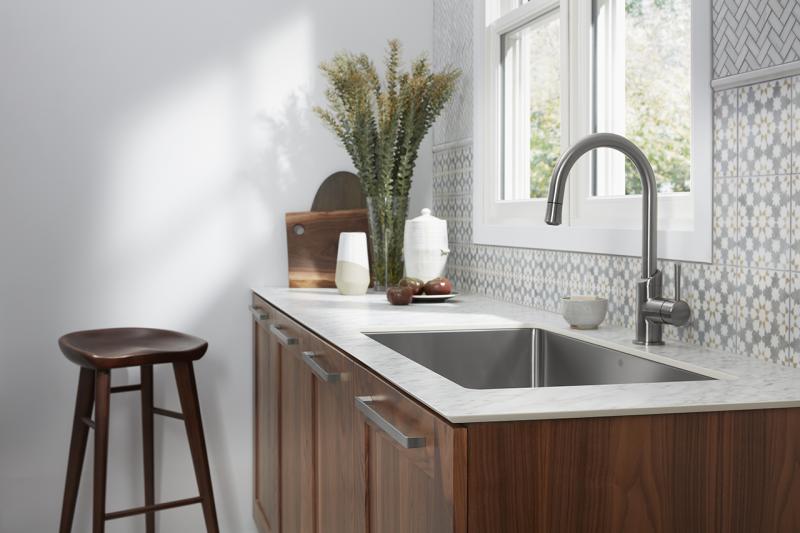
THINSCAPE Performance Tops are an engineered composite material that is made of paper and resin and designed for easy fabrication and installation. Measuring a ½ inch thick, it can be CNC routed and installed directly on cabinetry without first bonding it to a substrate. Panels come in four sizes.
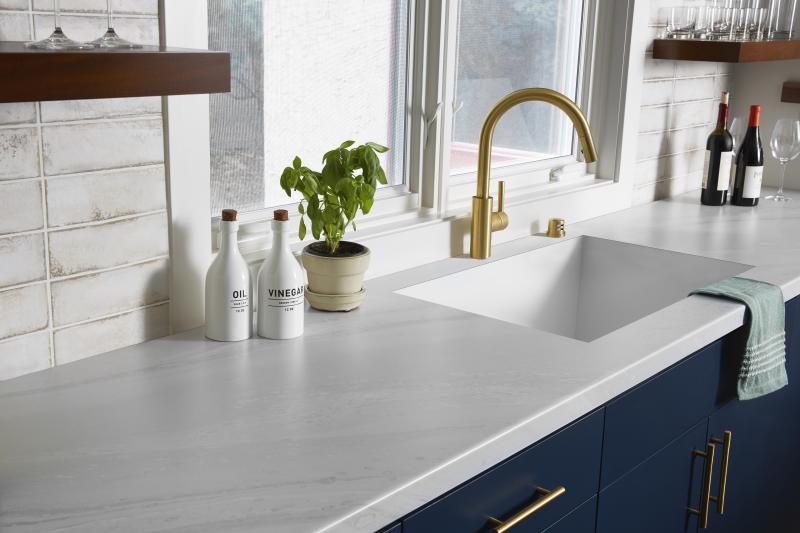
The 180fx laminate collection has added five new designs. Each is available with a Satin Touch finish and comes in five sheet sizes ranging from 30 inches by 96 inches to 60 inches by 144 inches.

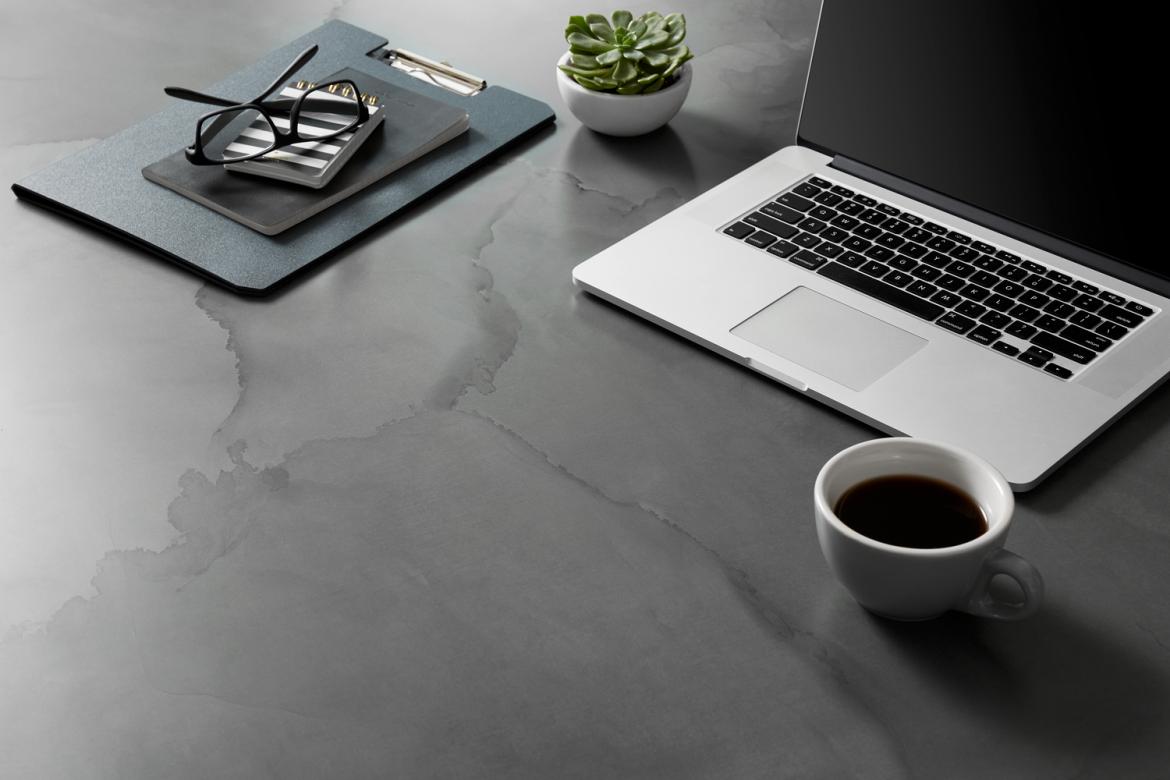
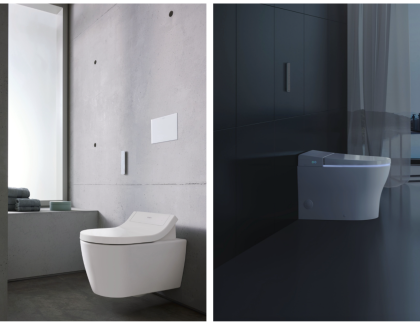

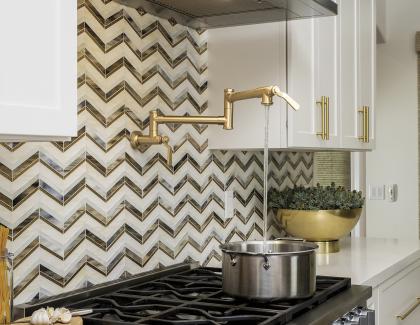

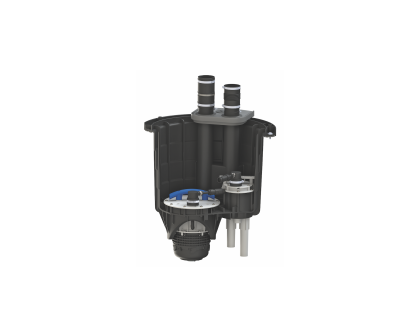

Add new comment